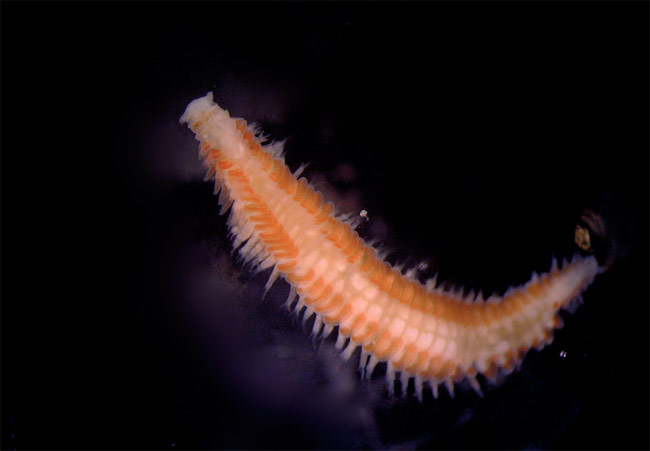New Worm Species Discovered on Dead Whales

Nine previously unknown species of worms were found hiding out on whale cadavers deep in the ocean, where the worms were feasting on bone-munching bacteria.
The new species are bristleworms, or polychaetes, which have segmented bodies, and are among the most common marine organisms. The worms find refuge at ocean depths, near the sea surface and even in burrows in beach sand.
"First of all, I think it's very exciting to find a new species in a habitat that not many people have looked at. And then we find so many new species," Helena Wiklund of the University of Gothenburg in Sweden told LiveScience.
As part of her dissertation, Wiklund identified the worms, four of which she discovered on the cadaver of a minke whale placed on the seafloor of the new national park Kosterhavet off the coast of Strömstad, Sweden. The other five species were discovered on whale bones in the deep waters off the coast of Calif.
Dead whales constitute an unpredictable food source, as it's impossible to figure when and where one will die. And it's a one-shot deal. But nevertheless, when the hefty animals die, they sink to the seafloor and the payoff is big for marine species able to cash in. Scientists estimate one whale corpse provides the nutritional equivalent of 2,000-years worth of normal biological detritus sinking to the seafloor.
Bristleworms are typically second- or third-shift feeders. First come the hagfish and sharks, which devour the whale's flesh. Then, bacteria colonize the skeleton and bristleworms follow.
Some bristleworm species are so specialized in eating dead whales they might not survive elsewhere. For example, the bone-devouring worm Osedax is equipped with a root system that can penetrate the whale bones and helps the worm digest the fats and proteins from such bones.
Get the world’s most fascinating discoveries delivered straight to your inbox.
While the newly discovered bristleworm species didn't show any particular adaptations for feeding in this whale-carcass habitat, Wiklund says she thinks they are specialized for subsisting at whale falls or similar ecosystems.
- More Whale News
- Video – Whales Steal Fish
- Images: Rich Life Under the Sea
Jeanna Bryner is managing editor of Scientific American. Previously she was editor in chief of Live Science and, prior to that, an editor at Scholastic's Science World magazine. Bryner has an English degree from Salisbury University, a master's degree in biogeochemistry and environmental sciences from the University of Maryland and a graduate science journalism degree from New York University. She has worked as a biologist in Florida, where she monitored wetlands and did field surveys for endangered species, including the gorgeous Florida Scrub Jay. She also received an ocean sciences journalism fellowship from the Woods Hole Oceanographic Institution. She is a firm believer that science is for everyone and that just about everything can be viewed through the lens of science.


